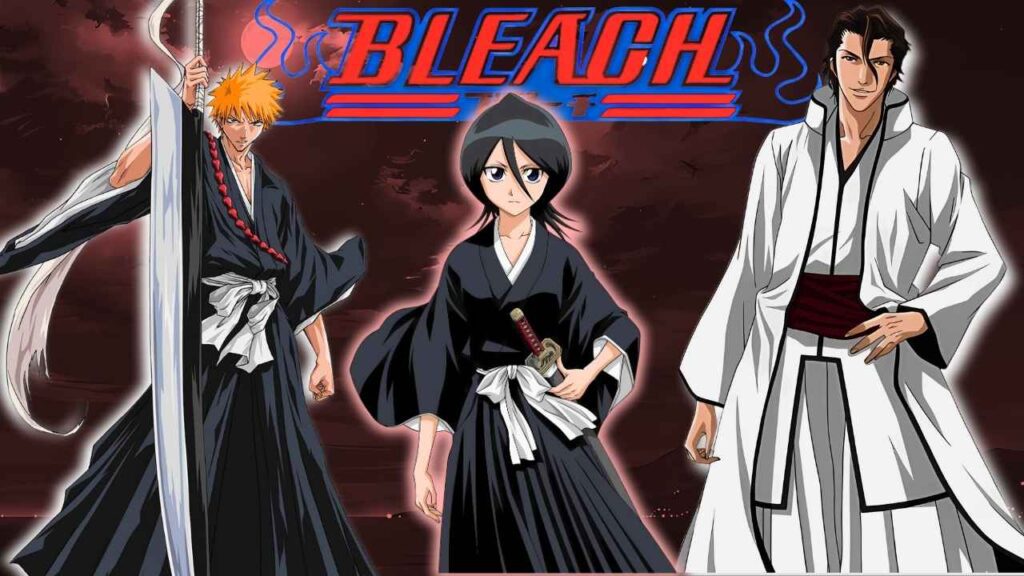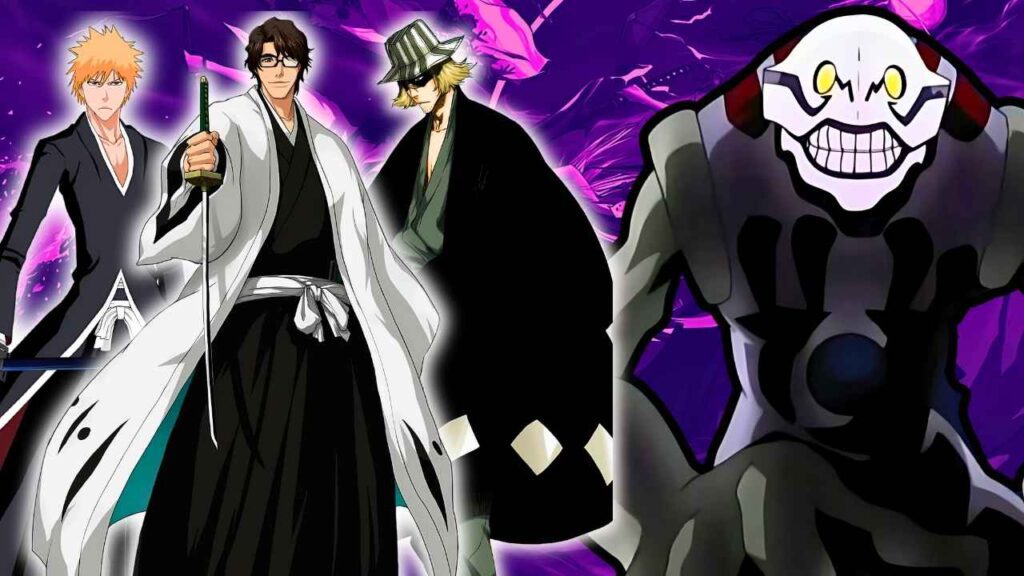Table of Contents

Bleach, one of the most iconic anime and manga created by Tite Kubo, captivates audiences with its complex storylines, deep character development, and unique blend of supernatural elements.
At its core, the series revolves around the constant battle between Soul Reapers (Shinigami) and Hollows (lost souls consumed by darkness). However, Bleach offers more than just epic battles and swordplay; it’s a journey through themes of identity, self-discovery, and the struggle for power.
Introduction to Bleach’s World
The world of Bleach is divided between the living world, Soul Society (the afterlife), Hueco Mundo (the realm of Hollows), and Hell. Soul Reapers are spiritual beings who are responsible for maintaining balance between these worlds by guiding souls to the afterlife and purifying Hollows.
The story begins with Ichigo Kurosaki, the protagonist of the series, a high school student who inadvertently becomes a Substitute Soul Reaper after an encounter with Rukia Kuchiki, a Soul Reaper who transfers her powers to him to save his family from a Hollow.
From that moment, Ichigo is thrust into a hidden world of spirits, powerful warriors, and monstrous enemies. While the battles between good and evil play out, Bleach digs deeper into existential questions, exploring themes like duty, sacrifice, and internal conflicts.
Soul Reapers vs. Hollows

At the heart of Bleach lies the conflict between Hollows and Soul Reapers. Hollows are Hollows are tormented souls that have lost their humanity, consumed by negativity, while Soul Reapers are charged with purifying these souls.
Hollows represent more than just enemies; they are the dark reflections of human nature, representing fear, loneliness, and regret. Soul Reapers, conversely, symbolize order, justice, and compassion. The constant clash between these forces mirrors the duality present within every character.
Ichigo’s Struggle with Identity
Ichigo Kurosaki’s journey is more than just about saving the world, it’s a quest for self-identity. Unlike traditional shonen protagonists who aim to be the best or the strongest, Ichigo’s battle is an internal one. Throughout Bleach, Ichigo grapples with the idea of who he is, his purpose, and the source of his power.
As a human, he is an outsider in the world of Soul Reapers. When he becomes a soul reaper, he faces rejection due to his unusual origin. His journey through different forms, human, Soul Reaper, Hollow, Quincy, and even Fullbringer, represents the multifaceted nature of identity.
Ichigo’s strength comes not from any one of these forms, but from embracing all parts of himself, highlighting the series’ core message: true power stems from self-acceptance.
The Espada and the Hollow World
One of the most defining arcs in Bleach is the Hueco Mundo arc, where Ichigo and his friends venture into the realm of Hollows to rescue Orihime Inoue from the clutches of the villainous Aizen and his elite Hollow warriors, the Espada.
The Espada, particularly characters like Ulquiorra and Grimmjow, challenge the simplistic view of Hollows as mere monsters. Ulquiorra, in particular, embodies nihilism and questions the existence of a heart or soul, making his character arc one of the most philosophical in the series.
Aizen: The Ultimate Villain

No discussion of Bleach is complete without mentioning Sosuke Aizen, one of anime’s most iconic villains. Aizen’s betrayal of Soul Society sets off a chain of events that lead to many of the series’ conflicts.
Aizen’s desire to become a god comes from his dissatisfaction with how the world works. He thinks real strength comes from going beyond the limits of being mortal, and he sees Soul Reapers as being trapped by the imperfect rules they follow.
Ichigo defeating Aizen represents the idea that absolute power is not the answer and that personal freedom and choice matter more. Ichigo, who balances different parts of his identity, contrasts with Aizen’s desire for control and domination.
The Importance of Friendship and Sacrifice
Although Bleach is known for its action and complex story, the strong friendships between characters are a big part of the story. Ichigo’s relationships with Orihime, Chad, Uryu, and Rukia show that real strength comes from being willing to protect others, not just from being powerful.
Sacrifice is another recurring theme. Rukia sacrifices her powers to save Ichigo, sparking the entire storyline. Ichigo, too, sacrifices his Soul Reaper powers after his final battle with Aizen, accepting that his duty to protect others comes at a personal cost.
The Final Arc and the Series Legacy
The Thousand-Year Blood War arc, the final chapter of Bleach, dives into Ichigo’s Quincy heritage and brings the series full circle. As Ichigo faces off against Yhwach, the leader of the Quincies, he confronts the truth about his origins and the culmination of his journey.
Bleach’s impact goes beyond its exciting storylines and unforgettable characters. It has clearly influenced the anime world with its cool character designs, unique fighting style using zanpakuto, and its exploration of deep ideas like identity, responsibility, and sacrifice.
Conclusion

Bleach is much more than a traditional shonen anime, it’s a narrative about self-discovery, the complexity of human emotions, and the balance between light and dark.
Through Ichigo’s journey as a Soul Reaper, Hollow, and Quincy, the series delivers a powerful message about the importance of embracing one’s true self. With its rich world-building, iconic characters, and exploration of existential themes, Bleach remains an enduring masterpiece in the anime landscape.


10 thoughts on “Bleach: A Fearless and Triumphant Journey Through Soul Reapers, Hollows, and the Power of Identity”